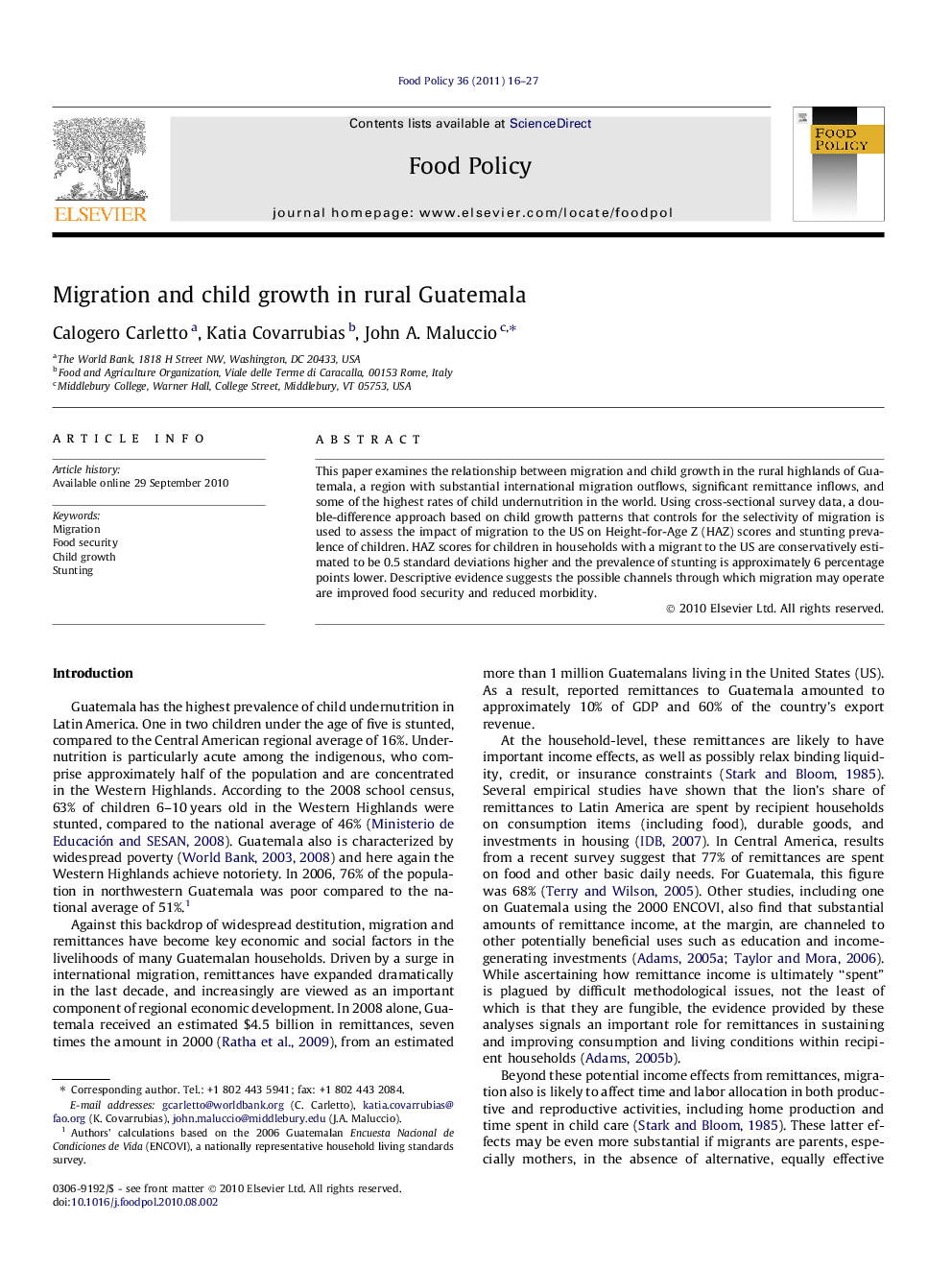| Article ID | Journal | Published Year | Pages | File Type |
|---|---|---|---|---|
| 5070986 | Food Policy | 2011 | 12 Pages |
This paper examines the relationship between migration and child growth in the rural highlands of Guatemala, a region with substantial international migration outflows, significant remittance inflows, and some of the highest rates of child undernutrition in the world. Using cross-sectional survey data, a double-difference approach based on child growth patterns that controls for the selectivity of migration is used to assess the impact of migration to the US on Height-for-Age Z (HAZ) scores and stunting prevalence of children. HAZ scores for children in households with a migrant to the US are conservatively estimated to be 0.5 standard deviations higher and the prevalence of stunting is approximately 6 percentage points lower. Descriptive evidence suggests the possible channels through which migration may operate are improved food security and reduced morbidity.
